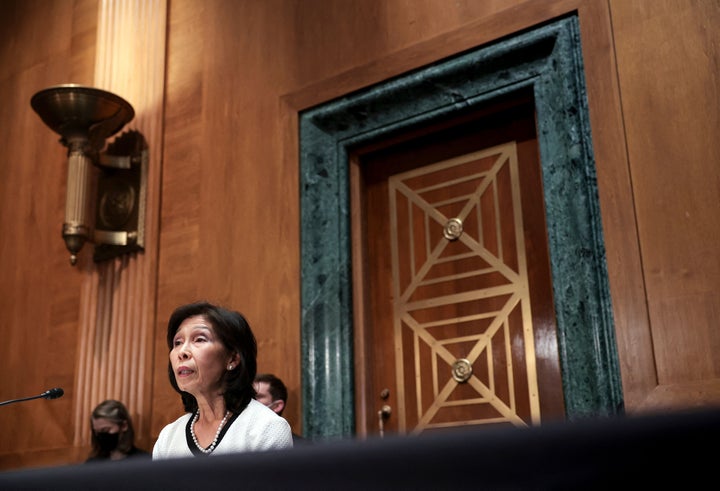Lawmakers in Washington were set Wednesday to create a clash in 2023 over the government’s ability to borrow money, even as a top Treasury official warned that the market for that debt, which is crucial to the global economy’s functioning, has already shown signs of weakness.
The last big showdown over the debt limit happened in 2011, as a Republican House used it to extract concessions from then-President Barack Obama and a Democratic Senate.
While that standoff led to the first-ever credit rating downgrade of U.S. debt, a repeat could lead to something worse, including a default that would result in Treasury securities no longer being the benchmark by which all other debt is priced, which would spike interest rates.
And, unlike in 2011, the market for government debt is already showing cracks, in part from structural issues but also because of the flood of pandemic-related debt and the Federal Reserve’s relentless march to raise interest rates.
“Over the past year or so, liquidity conditions in the Treasury market have shown some deterioration, but I believe these conditions largely reflect the heightened uncertainty about economic and geopolitical conditions,” Nellie Liang, the Treasury’s under secretary for domestic finance, told a Treasury market conference in New York City.
“Still, there is a risk that more negative shocks could lead to disruptions in market functioning, particularly if the shocks were amplified by leverage, funding mismatches, or other constraints at Treasury market participants. It is therefore important we continue to closely monitor this critical market for signs of rising vulnerabilities.”

Lou Crandall, chief economist with Wrightson ICAP, said the meltdown in demand for British debt after former Prime Minister Liz Truss’ ill-fated announcement of big tax cuts, showed how bad things can get.
“That’s currently the nightmare scenario for every debt manager around the world. A replay of the 2011 debt ceiling showdown here would play out in a difficult market environment,” he told HuffPost.
In 2011, the Republican House, led then by Speaker John Boehner, demanded “dollar-for-dollar” spending cuts to go along with any debt limit hike. In the end, the House GOP settled for only modestly effective caps on the annual spending Congress approves, and U.S. debt got downgraded for the first time because of the fight.
A similar situation is shaping up for next year. The debt subject to the debt ceiling stands at a little over $31 trillion, and the limit is set at $31.381 trillion. Usually, that would mean the Treasury would be unable to borrow, probably starting in a few months.
But during past debt limit faceoffs, the Treasury Department made various accounting moves to officially stay below the limit. Doing so again would likely give it enough borrowing room to make it until the late summer or early fall, according to some Wall Street debt-watchers.
If Republicans win the House, as appears increasingly likely, they will be able to hold an increase in the limit hostage and seek to exchange it for GOP policy priorities, like slowing spending on Social Security or Medicare.
So far, though, there are few signs that Democrats are that worried yet, or at least not worried enough to pass a new budget, which would spin out a bill to boost the debt limit that could pass the Senate with only Democratic votes.
Maine Sen. Angus King, an independent who caucuses with Democrats, said Democrats probably won’t be able to handle the debt ceiling through the budget reconciliation process before next year.
“It’s a lengthy and confusing process that there may not even be time for before the end of the year,” King said.
King has advocated for Congress to eliminate the debt ceiling as a political weapon, such as by automatically increasing the borrowing limit as part of an annual budget bill. He told HuffPost this week that there’s been some discussion among lawmakers about a permanent debt ceiling solution, though he doesn’t know when they could get around to it.
“It’s a lengthy and confusing process that there may not even be time for before the end of the year.”
- Sen. Angus King (I-Maine)
In the Senate, using the budget reconciliation process would eat up valuable floor time, possibly as much as two weeks, and expose senators up for reelection in 2024 to politically risky votes. But in the House, where the process would move faster, appetite remains for moving this year.
“I’m in favor of doing the debt ceiling in the lame duck in the House,” Rep. Richard Neal (D-Mass.), the chairman of the Ways and Means Committee, told HuffPost Wednesday.
House Speaker Nancy Pelosi (D-Calif.) also told a meeting of House Democrats Tuesday she has not given up on using reconciliation to raise the limit in the lame-duck session, according to a source in the meeting.
In her speech Tuesday, Treasury’s Liang pointed to a report written by regulators last year that looked at several episodes in recent years where the $24 trillion market in Treasury debt was temporarily disrupted, though it never ceased to function.
The U.S. debt market is the largest and most active financial market in the world, where investors know they can almost always buy or sell debt within seconds and can rest easy knowing there is no risk of default. But the report cited several instances where, sometimes due to structural issues, hiccups have occurred.
In one episode, in February 2021, the report said a sudden shift in sentiment ahead of an auction of seven-year notes meant it was hard for investors to sell Treasury debt with longer maturities. At one point, according to the report, the 20-year Treasury note received no bids on one large trading platform for five minutes.
